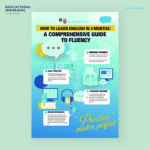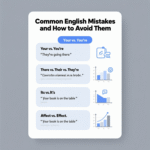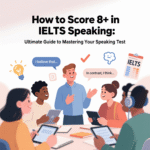In today’s competitive job market, mastering body language during interviews is crucial for leaving a lasting impression on potential employers. Non-verbal communication often speaks louder than words, conveying confidence, professionalism, and enthusiasm. Research indicates that up to 93% of communication is non-verbal, making it essential to refine these skills to stand out. This comprehensive guide explores body language tips to impress employers in interviews, offering detailed strategies to enhance your presence, build rapport, and secure your dream job.
Why Body Language Matters in Interviews
Non-verbal cues shape how interviewers perceive your personality, confidence, and suitability for a role. From the moment you enter the room, your posture, eye contact, and gestures send powerful signals. Employers assess these cues to gauge your emotional intelligence, adaptability, and interpersonal skills. A strong handshake, for instance, can signal assertiveness, while slouching may suggest a lack of confidence. By mastering body language, you can align your non-verbal signals with the professional image you wish to project.
The Science Behind Non-Verbal Communication
Non-verbal communication encompasses facial expressions, gestures, posture, and tone. Studies, such as those by Dr. Albert Mehrabian, highlight that 55% of communication is conveyed through body language, 38% through tone, and only 7% through words. In high-stakes settings like interviews, these cues are amplified. Employers instinctively interpret your body language to assess your authenticity and engagement. Understanding this science empowers you to control the narrative and present yourself as a polished candidate.
Preparing Your Body Language Before the Interview
Preparation is the foundation of effective body language. Before stepping into the interview room, take proactive steps to ensure your non-verbal cues exude confidence and professionalism.
Practice Power Poses
Power posing, a concept popularized by social psychologist Amy Cuddy, involves adopting expansive postures to boost confidence. Standing tall with shoulders back or placing hands on hips for two minutes before an interview can reduce stress hormones and increase feelings of power. Practice these poses in private to feel more assertive during the interview.
-
Stand tall: Keep your spine straight and shoulders relaxed to project confidence.
-
Mirror practice: Rehearse in front of a mirror to observe and refine your posture and gestures.
-
Breathing exercises: Take slow, deep breaths to calm nerves and maintain composure.
Dress to Impress
Your attire influences your body language by shaping your mindset. Dressing in professional, well-fitted clothing enhances your confidence and signals respect for the opportunity. Ensure your outfit aligns with the company’s culture while maintaining a polished appearance.
-
Neutral colors: Opt for navy, black, or gray to convey professionalism.
-
Comfortable fit: Avoid overly tight or loose clothing that restricts movement.
-
Minimal accessories: Keep jewelry and accessories subtle to avoid distractions.
Warm Up Your Facial Expressions
Your face is a canvas for emotions. Practice smiling naturally and maintaining neutral expressions to avoid appearing nervous or disinterested. Record yourself answering mock interview questions to assess your facial expressions and make adjustments.
Mastering the First Impression
The first few seconds of an interview set the tone. Employers form initial judgments based on your body language, making it critical to start strong.
The Power of a Confident Handshake
A firm handshake is a universal sign of confidence and respect. It’s often the first physical interaction with an interviewer, so make it count.
-
Grip strength: Aim for a firm but not overpowering grip.
-
Duration: Shake for 2-3 seconds, maintaining eye contact.
-
Dry hands: Ensure your hands are dry to avoid discomfort.
Entering the Room with Confidence
Your entrance communicates your self-assurance. Walk with purpose, keeping your head up and shoulders back. Avoid fidgeting or looking at the floor, as these habits can signal anxiety.
-
Steady pace: Walk at a moderate speed to appear composed.
-
Open posture: Keep arms relaxed by your sides, not crossed.
-
Smile lightly: A subtle smile conveys warmth and approachability.
Maintaining Eye Contact
Eye contact builds trust and shows engagement. Aim to maintain eye contact for 60-70% of the conversation, breaking occasionally to avoid staring.
-
Natural gaze: Look at the interviewer’s eyes, not their forehead or mouth.
-
Group interviews: Distribute eye contact evenly among all panel members.
-
Avoid overthinking: Let eye contact flow naturally to maintain authenticity.
Perfecting Your Posture During the Interview
Your posture reflects your confidence and attentiveness. Slouching or leaning too far back can make you appear disengaged, while sitting upright conveys professionalism.
Sitting with Authority
Choose a posture that balances comfort and professionalism. Sit up straight with your back against the chair, leaning slightly forward to show interest.
-
Feet flat: Keep both feet on the ground to avoid fidgeting.
-
Hands visible: Rest hands on your lap or the table to appear open.
-
Avoid slumping: Keep shoulders aligned and relaxed.
Adjusting for Comfort
If you feel tense, subtly adjust your position without drawing attention. Small movements, like shifting your weight or uncrossing your legs, can help you stay comfortable without disrupting the conversation.
Mirroring the Interviewer’s Posture
Subtly mirroring the interviewer’s posture can build rapport. If they lean forward, you might do the same to signal alignment. Be cautious not to mimic excessively, as it may appear unnatural.
Using Gestures Effectively
Hand gestures can enhance your communication when used thoughtfully. They add emphasis and convey enthusiasm but must be controlled to avoid distraction.
Purposeful Gestures
Use gestures to reinforce key points. For example, counting on your fingers when listing accomplishments can make your message more memorable.
-
Keep it natural: Let gestures flow organically rather than forcing them.
-
Moderate movement: Avoid overly large or rapid gestures that distract.
-
Open palms: Show openness and honesty by keeping palms visible.
Avoiding Nervous Habits
Fidgeting, such as tapping your foot or playing with a pen, can undermine your confidence. Identify and eliminate these habits through practice.
-
Self-awareness: Record practice sessions to spot nervous tics.
-
Anchor hands: Rest hands lightly on the table to minimize fidgeting.
-
Pause and breathe: Take brief pauses to regain control if you feel anxious.
Conveying Enthusiasm Through Facial Expressions
Your facial expressions should align with your words to convey genuine interest and positivity. A warm, engaged demeanor makes you more likable and memorable.
Smiling Strategically
A genuine smile signals warmth and enthusiasm. Smile when greeting the interviewer, discussing your passion for the role, or responding to positive feedback.
-
Authentic smiles: Engage your eyes to create a genuine, warm smile.
-
Avoid over-smiling: Constant smiling can seem forced or insincere.
-
Context matters: Reserve smiles for appropriate moments, such as discussing achievements.
Nodding to Show Engagement
Nodding subtly while the interviewer speaks demonstrates active listening. It shows you value their input and are fully engaged in the conversation.
-
Gentle nods: Use small, deliberate nods to avoid STS: avoid excessive movement.
-
Timing: Nod at natural intervals, such as when agreeing or understanding.
-
Balance: Avoid constant nodding, which may seem distracted.
Managing Nervous Energy
Interviews can be nerve-wracking, but controlling your body language helps mask anxiety and project confidence.
Breathing Techniques
Deep, controlled breathing can calm your nerves and steady your movements. Practice diaphragmatic breathing before and during the interview to maintain composure.
-
Inhale deeply: Breathe in for 4 seconds, hold for 4, and exhale for 6.
-
Discreet practice: Use subtle breaths to avoid drawing attention.
-
Regular practice: Incorporate breathing exercises into your daily routine.
Channeling Nervous Energy
If you feel jittery, channel your energy into positive actions, such as sitting up straighter or making deliberate gestures. This redirects nervous habits into confident behaviors.
Building Rapport Through Non-Verbal Cues
Rapport is key to forming a connection with the interviewer. Body language plays a significant role in creating a sense of trust and likability.
Matching Energy Levels
Observe the interviewer’s demeanor and adjust your energy to match. If they’re formal, maintain a professional tone; if they’re conversational, adopt a slightly warmer approach.
-
Tone alignment: Speak at a similar volume and pace.
-
Positive mirroring: Reflect their enthusiasm without copying directly.
-
Stay authentic: Adapt subtly while remaining true to yourself.
Using Proxemics Wisely
Proxemics, or the use of physical space, affects comfort levels. Respect the interviewer’s personal space while maintaining an approachable distance.
-
Chair positioning: Sit at a comfortable distance from the table.
-
Lean slightly: Show interest without invading personal space.
-
Cultural awareness: Be mindful of cultural differences in space preferences.
Handling Difficult Questions with Poise
Challenging questions can test your composure. Your body language can reinforce your confidence, even when you’re unsure of the answer.
Pausing Thoughtfully
Taking a moment to think before answering shows thoughtfulness. Use calm, deliberate movements to buy time, such as adjusting your posture or nodding slightly.
-
Brief pause: Take 2-3 seconds to gather your thoughts.
-
Maintain eye contact: Look at the interviewer while thinking.
-
Confident delivery: Speak clearly and steadily once ready.
Staying Composed Under Pressure
If faced with a tough question, avoid defensive body language like crossing your arms or leaning back. Instead, lean slightly forward to show engagement.
-
Open posture: Keep arms relaxed to appear approachable.
-
Neutral expression: Avoid frowning or looking surprised.
-
Slow speech: Speak deliberately to maintain control.
Virtual Interview Body Language Tips
With the rise of remote interviews, mastering body language on camera is equally important. Virtual settings require additional considerations to ensure your non-verbal cues translate effectively.
Positioning Yourself on Camera
Your positioning affects how you’re perceived on screen. Center yourself in the frame, with your face and shoulders visible, to create a professional appearance.
-
Camera height: Position the camera at eye level for a natural angle.
-
Lighting: Use soft, even lighting to avoid shadows.
-
Background: Keep it clean and distraction-free.
Engaging Through the Screen
Virtual interviews limit physical presence, so amplify your body language to convey enthusiasm. Use deliberate gestures and maintain eye contact with the camera.
-
Look at the camera: Mimic eye contact by focusing on the lens.
-
Exaggerate slightly: Use slightly larger gestures to compensate for the screen.
-
Clear audio: Ensure your voice is audible and steady.
Minimizing Distractions
Distractions can disrupt your virtual presence. Control your environment to maintain focus on your body language.
-
Quiet space: Eliminate background noise.
-
Stable connection: Test your internet beforehand.
-
Professional setup: Use a high-quality webcam and microphone.
Cultural Considerations in Body Language
Body language varies across cultures, and understanding these differences is critical in diverse workplaces. Research the company’s cultural context to tailor your non-verbal cues.
Eye Contact Norms
In some cultures, direct eye contact is a sign of confidence, while in others, it may be seen as disrespectful. Adjust your approach based on the interviewer’s cultural background.
-
Western cultures: Maintain steady eye contact.
-
Asian cultures: Use softer, intermittent eye contact.
-
Research beforehand: Learn cultural norms if interviewing internationally.
Gestures and Personal Space
Gestures like pointing or touching may be interpreted differently. Be cautious with overly expressive movements in conservative cultures.
-
Minimal pointing: Use open-handed gestures instead.
-
Respect space: Maintain a professional distance.
-
Observe cues: Follow the interviewer’s lead for guidance.
Common Body Language Mistakes to Avoid
Even small missteps in body language can undermine your credibility. Awareness and practice can help you avoid these pitfalls.
Overly Aggressive Postures
Leaning too far forward or using dominant gestures can seem confrontational. Aim for a balanced, approachable demeanor.
-
Moderate leaning: Lean slightly to show interest, not dominance.
-
Relaxed gestures: Keep movements smooth and natural.
-
Read the room: Adjust based on the interviewer’s reactions.
Inconsistent Signals
Mixed signals, such as smiling while discussing challenges, can confuse interviewers. Ensure your body language aligns with your message.
-
Match emotions: Let your expressions reflect your words.
-
Practice congruence: Rehearse answers to maintain consistency.
-
Seek feedback: Ask trusted peers to review your performance.
Excessive Fidgeting
Fidgeting distracts from your message and signals nervousness. Stay mindful of your movements to maintain professionalism.
-
Still hands: Rest them lightly to avoid unnecessary motion.
-
Controlled legs: Avoid tapping or shaking.
-
Focused attention: Channel energy into active listening.
Practicing Body Language for Long-Term Success
Developing strong body language is a lifelong skill that extends beyond interviews. Consistent practice ensures lasting improvement.
Role-Playing Scenarios
Simulate interviews with friends or mentors to refine your non-verbal skills. Record these sessions to identify areas for improvement.
-
Mock interviews: Practice with realistic questions.
-
Feedback loops: Ask for specific body language critiques.
-
Iterate: Adjust based on feedback over time.
Building Self-Awareness
Self-awareness is key to mastering body language. Regularly assess your habits to align them with professional standards.
-
Video analysis: Record yourself to observe patterns.
-
Journaling: Track your progress and challenges.
-
Mindfulness: Stay present to control unconscious habits.
Seeking Professional Coaching
A body language coach or career advisor can provide personalized guidance. They can pinpoint subtle issues and offer tailored strategies.
-
Workshops: Attend body language training sessions.
-
One-on-one coaching: Get individualized feedback.
-
Continuous learning: Stay updated on communication trends.
Adapting Body Language for Different Industries
Different industries have unique expectations for body language. Tailor your approach to align with the role and company culture.
Creative Industries
Creative fields often value expressive and relaxed body language. Show enthusiasm through animated gestures and a warm demeanor.
-
Dynamic gestures: Use hands to convey creativity.
-
Relaxed posture: Lean slightly forward to show engagement.
-
Authentic energy: Let your personality shine through.
Corporate Environments
Formal industries, like finance or law, prioritize polished and restrained body language. Focus on precision and professionalism.
-
Minimal gestures: Use subtle, deliberate movements.
-
Upright posture: Sit straight to convey authority.
-
Neutral expressions: Maintain a calm, professional demeanor.
Tech and Startup Cultures
Tech and startup environments often blend professionalism with informality. Strike a balance between confidence and approachability.
-
Moderate gestures: Use hands to emphasize technical points.
-
Relaxed confidence: Lean slightly forward to show interest.
-
Cultural fit: Mirror the company’s casual or formal tone.
Body Language in Group Interviews
Group interviews require you to manage body language with multiple interviewers. Distribute your attention evenly to build rapport with everyone.
Engaging the Entire Panel
Make eye contact with all interviewers, even when answering one person’s question. This shows respect and inclusivity.
-
Rotate gaze: Shift eye contact naturally among panelists.
-
Address names: Use names if known to personalize responses.
-
Open posture: Face the group to appear approachable.
Handling Interruptions
If interrupted, maintain calm body language to show composure. Avoid defensive gestures like crossing your arms.
-
Pause gracefully: Stop speaking and nod to acknowledge.
-
Stay relaxed: Keep shoulders down and hands visible.
-
Resume confidently: Pick up where you left off smoothly.
Post-Interview Body Language
Your body language after the interview can leave a lasting impression. Exit the room with the same confidence you entered.
Graceful Exits
Stand up smoothly, offer a firm handshake, and thank the interviewer warmly. Maintain eye contact and a positive expression.
-
Firm goodbye: Shake hands with confidence.
-
Smile lightly: Show appreciation with a subtle smile.
-
Walk steadily: Leave the room with purpose.
Follow-Up Communication
If sending a thank-you email, reflect your professional demeanor in your tone. Reinforce your positive body language through polished language.
-
Prompt response: Send within 24 hours.
-
Personalized message: Reference specific discussion points.
-
Professional tone: Maintain formality to match the interview.
Recommendations and Suggestions
To excel in interviews, integrate these body language tips into your preparation:
-
Practice daily: Rehearse posture, gestures, and expressions regularly.
-
Record yourself: Analyze recordings to identify weaknesses.
-
Seek feedback: Ask mentors or peers for constructive criticism.
-
Study the company: Align your body language with their culture.
-
Stay relaxed: Use breathing techniques to manage stress.
-
Be authentic: Let your personality complement your non-verbal cues.
-
Adapt to context: Adjust based on in-person or virtual settings.
-
Continuous improvement: Refine skills through workshops or coaching.
Frequently Asked Questions (FAQs)
1. Why is body language important in interviews?
It conveys confidence, professionalism, and engagement, influencing employers’ perceptions.
2. How can I improve my body language for interviews?
Practice power poses, maintain eye contact, and rehearse in front of a mirror.
3. What is a power pose?
An expansive posture, like standing with hands on hips, that boosts confidence.
4. How do I avoid nervous habits during interviews?
Stay self-aware, rest hands lightly, and practice breathing techniques.
5. What’s the best way to shake hands in an interview?
Use a firm grip, maintain eye contact, and shake for 2-3 seconds.
6. How should I sit during an interview?
Sit upright, lean slightly forward, and keep hands visible.
7. Can body language differ across cultures?
Yes, eye contact and gestures vary; research cultural norms beforehand.
8. How do I handle tough questions without losing composure?
Pause briefly, maintain eye contact, and answer clearly.
9. What’s the role of eye contact in interviews?
It builds trust and shows engagement; aim for 60-70% of the time.
10. How do I prepare for virtual interview body language?
Position the camera at eye level, use clear lighting, and look at the lens.
11. What are common body language mistakes?
Slouching, fidgeting, and inconsistent expressions can undermine credibility.
12. How do I build rapport with interviewers?
Mirror their energy, use open gestures, and maintain a warm demeanor.
13. What’s the best posture for confidence?
Sit straight, shoulders relaxed, and lean slightly forward.
14. How can I practice body language effectively?
Role-play, record yourself, and seek professional coaching.
15. How do I adapt body language for group interviews?
Distribute eye contact evenly and address all panelists inclusively.




















